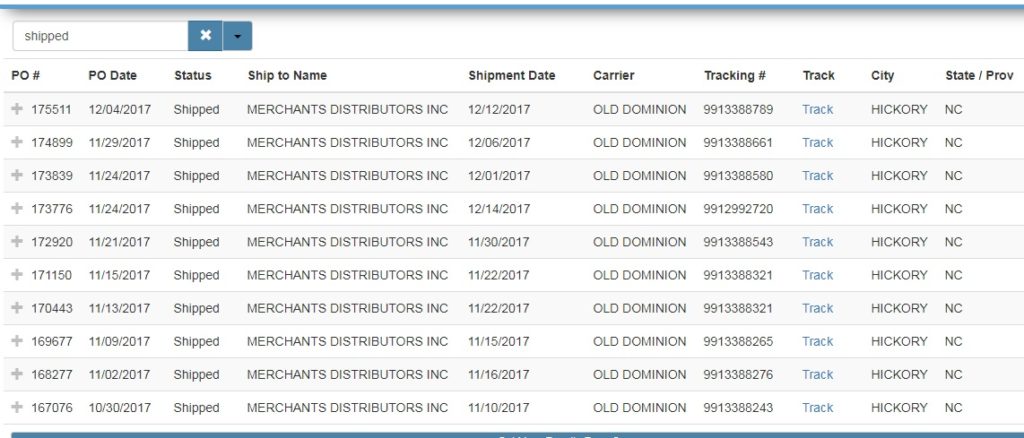
According to a Forrester report, “Almost 78% of buyers and 83% of consumers find the fulfillment phase to be important or very important, highlighting the importance of the ability to track and trace purchased products regardless of the channel or delivery options chosen.”
Key Advantages of eCommerce Platforms
Obviously, more and more companies are moving to eCommerce platforms to provide online ordering for their customers. They want to make it easy to order products, view order status (including tracking) and order history, and make invoices available to customers. In many cases, businesses are investing considerable sums in storefronts that connect to back-office operations. We expect this trend to continue and B2B eCommerce offerings to increase in sophistication.
Delivering Important eCommerce Features When Other Mechanisms Are Used
But in cases where orders are placed through other mechanisms – electronic data interchange (EDI), sales reps, and call centers, to name a few – companies also need to make order status and history available to their customers. They want that information to be online and searchable for customers on a 24/7 basis from any desktop, laptop, or smartphone.
Order Fulfillment and Logistics Integration: Improving Customer Experience
In the rapidly evolving world of eCommerce, smooth order fulfillment and logistics integration are vital for exceptional customer experiences. Advanced technologies, including trucking ELDs, telematics, load board, and more have revolutionized supply chain management, improving efficiency and providing accurate, accessible order tracking.
Customers now expect real-time order tracking, regardless of the ordering channels they use – be it through electronic data interchange (EDI), sales representatives, call centers, or traditional eCommerce platforms. Providing secure and intuitive order tracking experiences 24/7, from any device, is crucial to meet these expectations and foster brand loyalty.
Providing Order Status Without an eCommerce Platform
Some companies want to offer order status and tracking information online, but don’t have a full-fledged eCommerce platform and aren’t likely to install one in the next few years. How do they go about making this information available to customers online?
In many cases, order history and status information is in their ERP system. They want to make that information available via the web, so they need a web-based platform that can display order status and tracking information for each customer securely and intuitively – in a way that’s easy to navigate, secure, and flexible.
The Answer: RevBase Marketing Asset Management Software
Several months ago, a RevBase customer – a leading consumer healthcare company selling to many of the world’s top retailers – asked us about providing this type of solution. They knew RevBase could handle online order status, because they use it for eCommerce. But they also had orders that were placed through other mechanisms and it was important to offer order status and tracking information online for these customers as well.
We were able to use our RevBase marketing asset management platform to create a customer portal containing accounts and logins for over 100 customers who place thousands of orders per month. Order tracking and other information is sent to us from their back-office system (SAP) on a regular basis. RevBase imports the data, organizes it, and presents it for customers online.
RevBase Customer Portal: A Fast, Low-cost Solution
This solution took us a month to get up and running. It was inexpensive because the customer didn’t need a full-fledged eCommerce suite. We provided the data integration, branded the online RevBase instance, and created the portals using standard RevBase tools. Problem solved!
Would you like to explore how you can make order tracking available online to your customers who use a variety of ordering mechanisms? Simply click here for a no-cost, no-obligation consultation.
